What will remain of our solar system a few billion years from now? We’re launching the Exoasteroids project to gather some clues. Join this new citizen science project, and help search for variable white dwarfs – bizarre objects that we can catch in the act of disassembling planetary systems.
25.09.2024
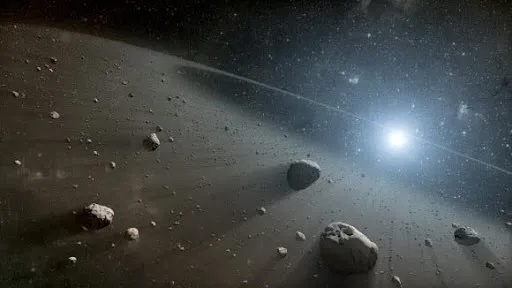
White dwarfs each pack the mass of a star into a ball the size of a planet. They are also the future of our solar system. A few billion years from now, the Sun will evolve into a red giant and then into a white dwarf, devouring the innermost planets and millions of asteroids in the process.
With the Exoasteroids project, you’ll search for white dwarfs that are growing brighter or dimmer. Such white dwarfs may be remnants of planetary systems still actively munching on asteroids, leading to outbursts detectable in images from NASA’s Wide-field Infrared Survey Explorer (WISE) space telescope.
Help us find planetary remains and disintegrating asteroids in other solar systems!
Anyone with a laptop or cell phone can participate. Participation does not require citizenship in any particular country.
Exoasteroids
Our Mission
We call asteroids that orbit stars other than the Sun "exoasteroids". Join our search for exoasteroids around white dwarfs, planet-sized objects that represent the final evolutionary stage of Sun-like stars!
When a Sun-like star dies it becomes a white dwarf. Many white dwarfs are surrounded by dusty disks, thought to be remnants of planetary systems. These disks may harbor orbiting bodies such as asteroids and comet. (See the artist’s rendition below). Dusty disks around white dwarfs are excellent laboratories for studying the end stage of planetary systems, providing unique information about the formation and death of planets.
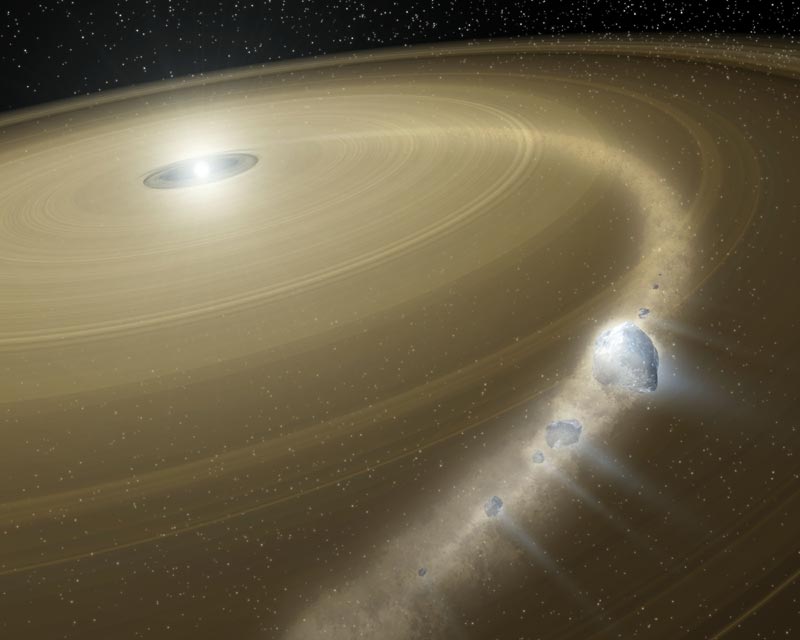
(Credit: NASA/HST)
Here at the Exoasteroids project, you will use time-lapse movies of the sky to identify white dwarfs that have changed in brightness over the past decade. These brightness changes can occur when objects similar to asteroids break in pieces, releasing vast quantities of dust. In other words, when a white dwarf that changes in brightness over time, it’s a sign that exoasteroids may be orbiting it.
The movies you’ll view come from NASA's Wide Field Infrared Explorer (WISE) space telescope. White dwarfs with dusty disks have been known for more than 35 years from visible light observations. But NASA’s WISE space telescope has now been gathering infrared observations of the entire sky for more than a decade, giving us a new chance to look for brightness changes caused by exoasteroids. We’re asking for your help examining these data because of the amazing job that the human eye does at identifying patterns that computers struggle to disentangle from noise.
Many white dwarf brightness changes have been observed with WISE images. So far only one example is thought likely to be an exoasteroid outburst. But with your help we can grow the sample of white dwarfs with infrared brightness variations, giving us new clues about the deaths of stars and the future of planetary systems.
Why Should We Care About Exoasteroids?
Small orbiting bodies, such as asteroids and comets, are able to survive the heat and pressure during the formation of their host star. Therefore, it has been theorized and observed that these objects can survive the death of their host star. Although we can't travel billions of years into the future to see this scenario play our in our own solar system, we can piece together the sequence of events by observing what happens in white dwarfs of different ages.
Some theories posit that asteroids in our own solar system helped deliver the chemical building blocks for life to Earth. So finding exoasteroids around white dwarfs can be thought of as tackling one aspect of the mystery regarding potential life elsewhere in the Universe.
The image below shows pictures of a white dwarf with a circumstellar disk taken from the Hubble Space Telescope at top and computer-rendered images at bottom representing what astronomers believe to be the disk's true three-dimensional form. This image shows the general shape of the disk around a white dwarf, which can be imagined like a frisbee.
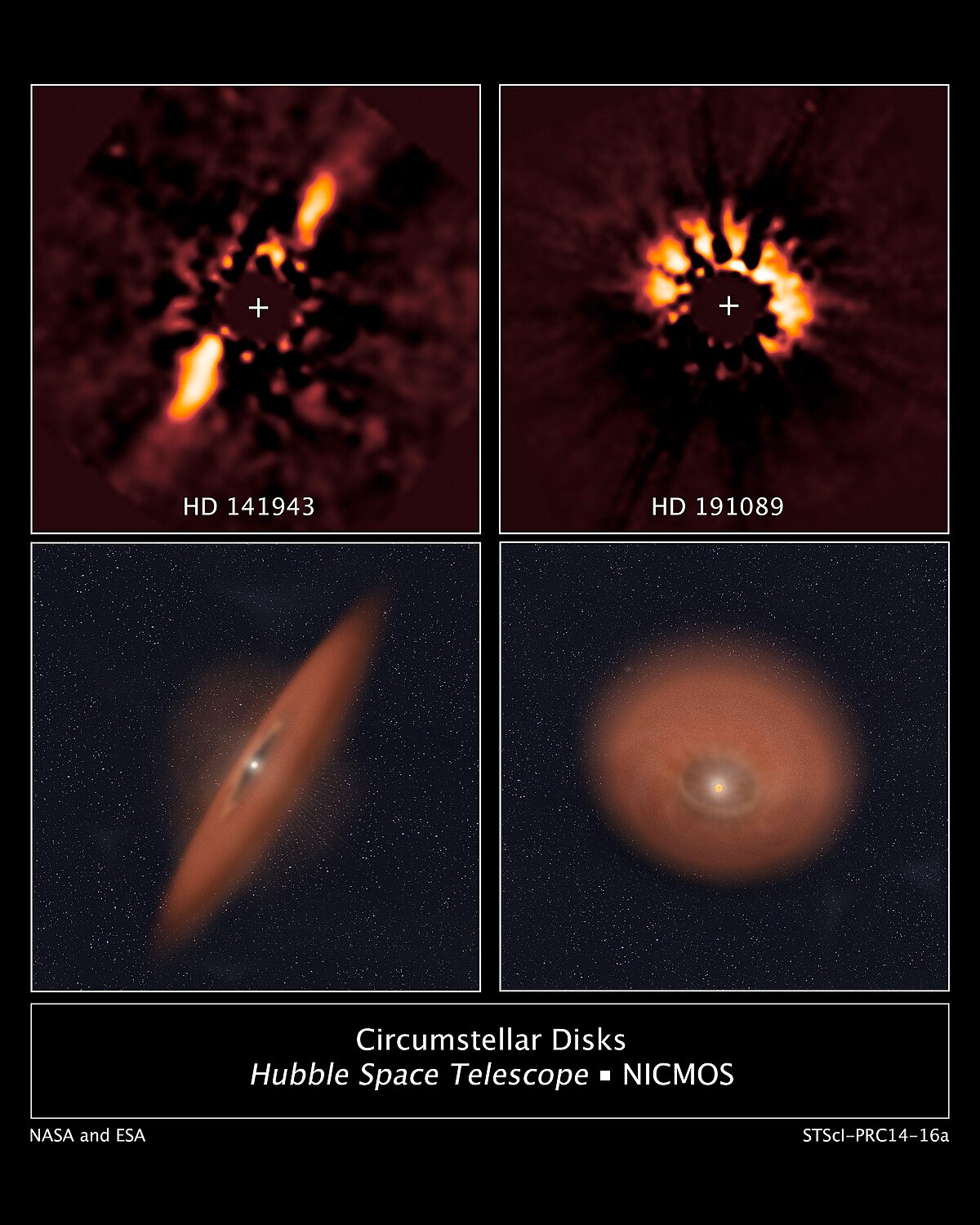
(Credit: HST/NICMOS)
So, through your hard work in this project, you can help reveal the evolution of planetary systems, chemistry, and maybe even life in the Universe!
What Are You Looking For?
Within the Exoasteroids citizen science project, you are shown false-color images from the WISE spacecraft that are joined together to create a short movie. Blue represents light with a wavelength of about 3.4 microns and red represents light with a wavelength of about 4.6 microns. For comparison, these infrared light wavelengths are roughly 10 times larger than the wavelength of visible light we experience in everyday life. The time-lapse movie for each white dwarf typically features telescope images spanning more than 10 years, from early 2010 through late 2021. A white dwarf is placed at the center of each of these movies. The question you'll then need to answer is: does the white dwarf at the center of the screen change in brightness over time? The change in brightness can be different depending on why the object is variable. Thus, look for any change in brightness that happens in a single frame (short-lived) or multiple frames (long-lived). Below is an example of a white dwarf that shows true changes in its brightness we hope you'll discover more of these!
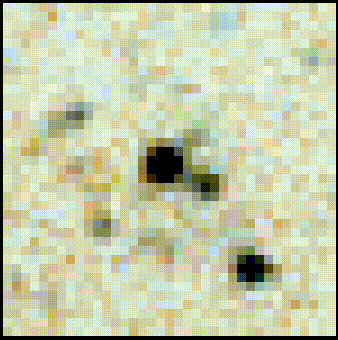
(Credit: NASA/WISE)
Why Does Discovering Exoasteroids Require the Human Eye?
It is possible to run computerized algorithms that will attempt to flag cases of stars that appear to change in brightness. However, white dwarfs with true infrared variability are rare, meaning that automated searches are likely to return far more mistaken identifications of variable white dwarfs than correct identifications.
Some reasons for computer algorithm misidentification of changing brightness include image noise and other data artifacts. Bright stars have spiky appearances in WISE data, referred to as diffraction spikes. Bright stars also cause blurry blobs of light that's been scattered around inside the WISE telescope, and these donut-shaped artifacts are called optical ghosts. Artifacts like diffraction spikes and ghosts can hop back and forth, or even rotate around, contaminating computer measurements of the brightnesses of huge numbers of stars. These measurement problems limit the utility of computer software, but with your own eyes and brain, you can help us recognize cases of true white dwarf brightness changes from among many instances of noise and data artifacts.
Below is an example diffraction spike running through the image center (top panel), and an example orange-colored ghost artifact in WISE telescope images (bottom panel).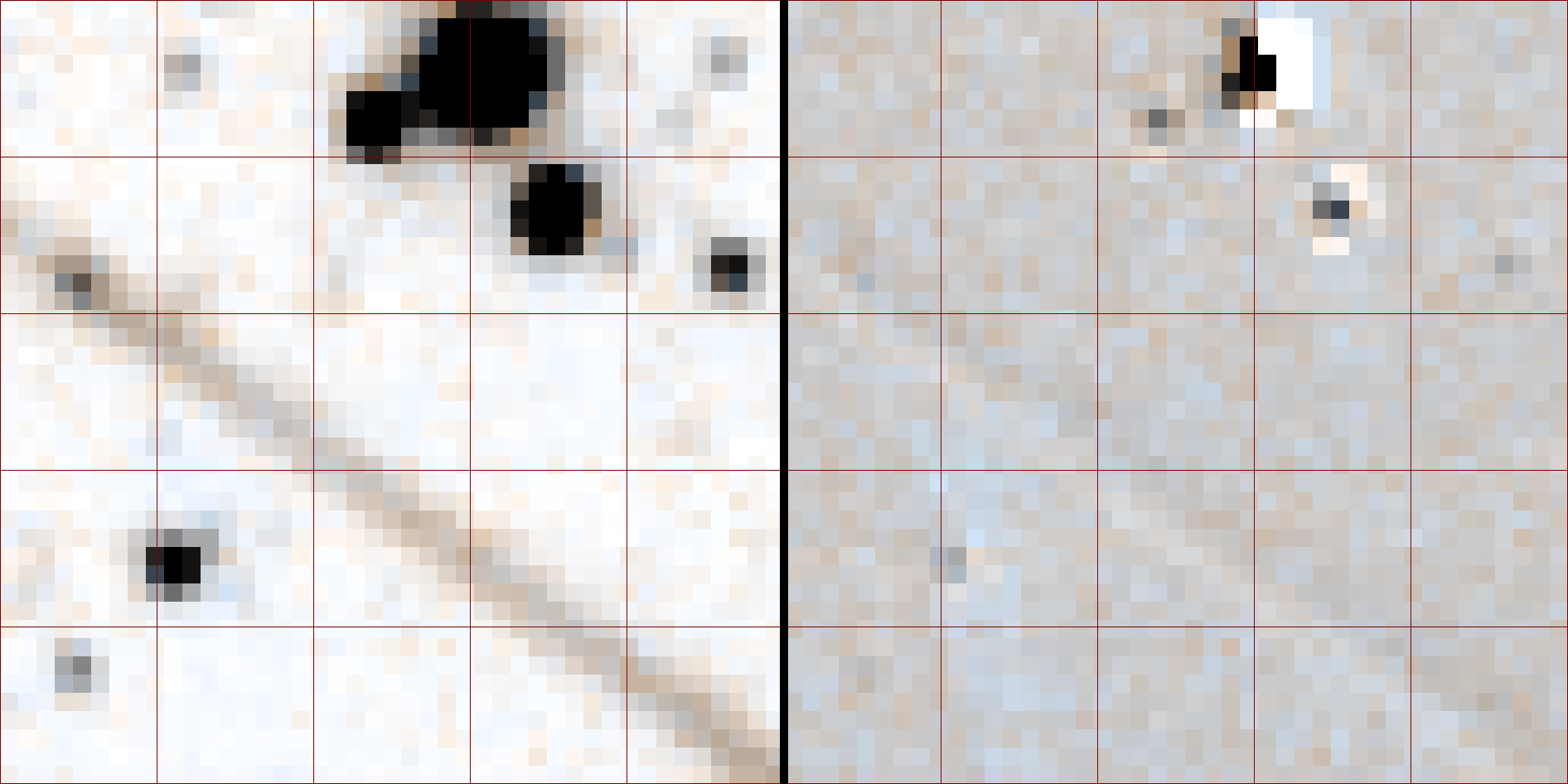
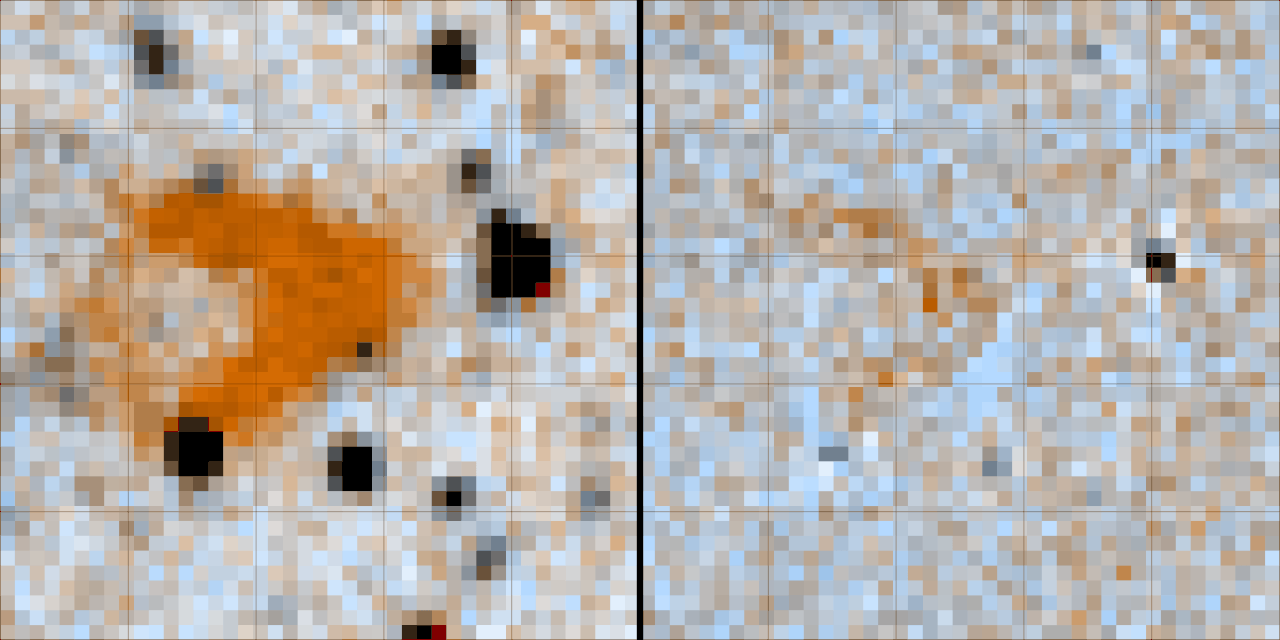
(Credit: NASA/WISE)
A Bit More About the Science
This section is intended for those who are curious about additional scientific details behind the Exoasteroids citizen science project, but it's perfectly fine to participate without having read this bonus info.
White Dwarf Sample
Recent all-sky data from the Gaia space telescope have dramatically increased the sample of likely white dwarfs in our Milky Way galaxy. Gaia has provided a list of more than 1 million white dwarf candidates! Deciding which white dwarfs to show within the Exoasteroids project makes use of Gaia, specifically Gaia distance measurements, as these can distinguish between a very faint white dwarf nearby the Sun and brighter "main sequence" stars further away. There are two figures below: on the left is an artist's take on the WISE spacecraft, and on the right is an artist's rendition of the Gaia spacecraft.
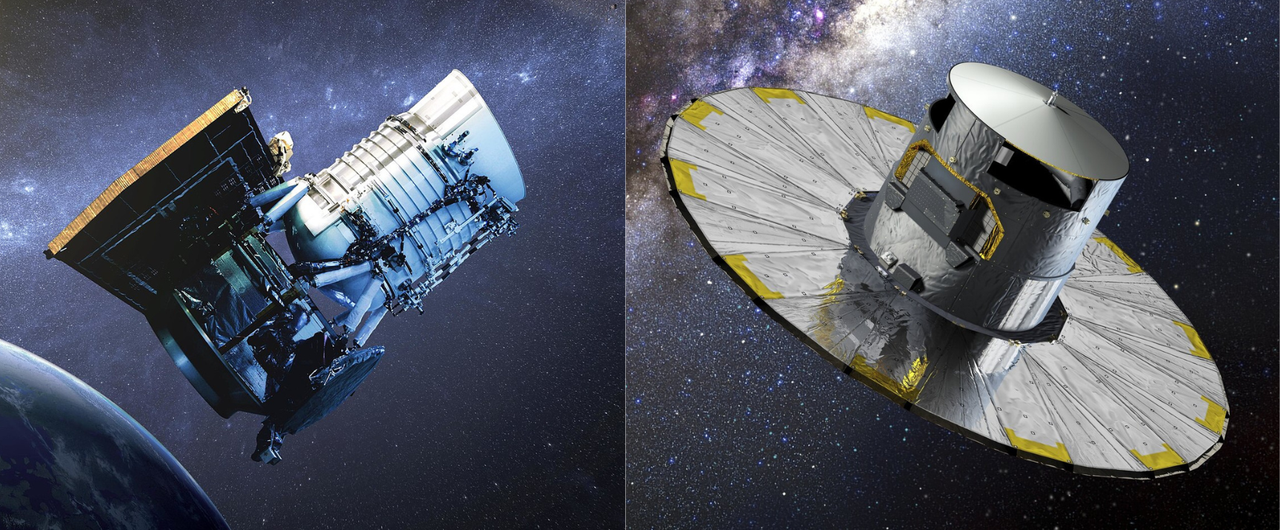
(WISE Credit: NASA/JPL)
(Gaia Credit: ESA)
Variability in White Dwarfs
WISE and Spitzer, NASA's infrared Great Observatory, took repeated images of white dwarfs and recorded the brightness measurements. These data have taught us that dusty white dwarfs display infrared brightness variations on long timescales of 6 months to 10 years. Below is a diagram showing the spectrum (light emission as a function of wavelength) for a dusty white dwarf. Gaia detects the visible light from the white dwarf itself at wavelengths of less than 1 micron. Infrared space telescopes like WISE and Spitzer detect emission from the dust disk at wavelengths of several microns to tens of microns. Interestingly, the recently launched JWST excels at observations in this same infrared wavelength range -- some day your best variable, dusty white dwarf discoveries may be looked at with JWST!
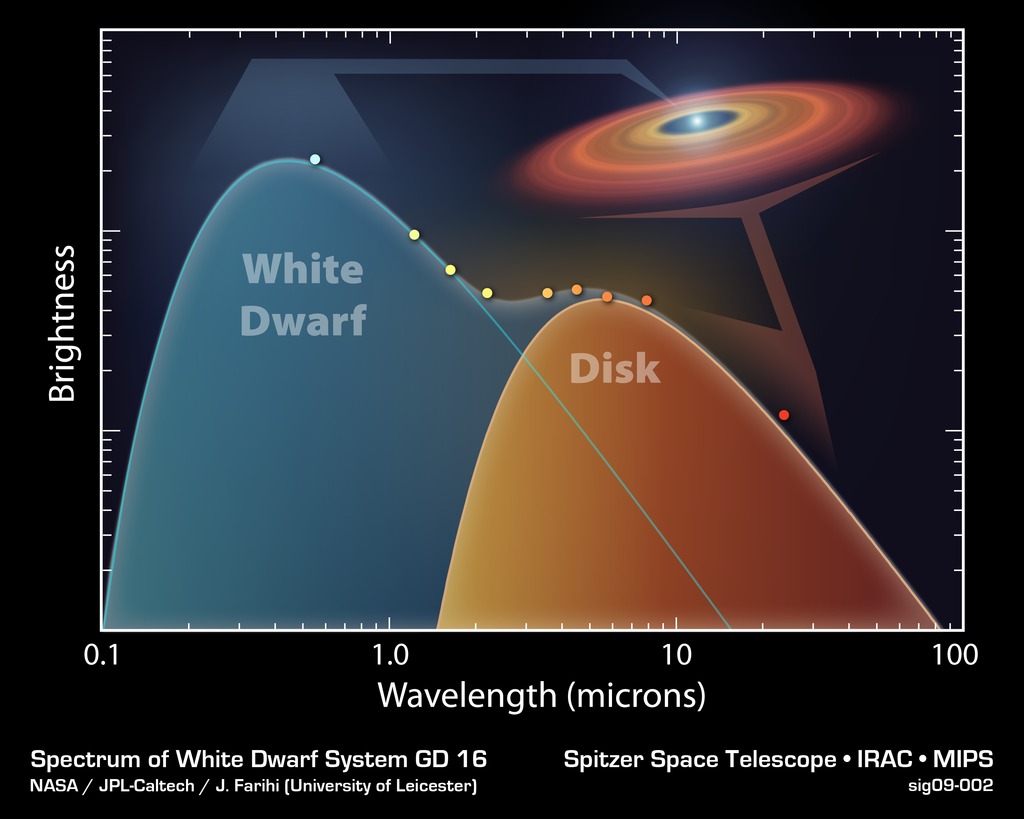
(Credit: NASA/JPL-Caltech/J. Farihi)
More Information
For more background information about the science of dusty white dwarfs, be sure to check out the Education and FAQ sections.
Acknowledgments
Thanks to NASA, which funded this work through the Citizen Science Seed Funding Program, Grant 80NSSC23K1528.
The work of Exoasteroids personnel has been supported by NOIRLab, which is managed by the Association of Universities for Research in Astronomy (AURA) under a cooperative agreement with the National Science Foundation.
Exoasteroids makes use of the WiseView image cutout tool (Caselden et al. 2018).
Logos for this project were designed using Canva.
Quelle: Zooniverse
